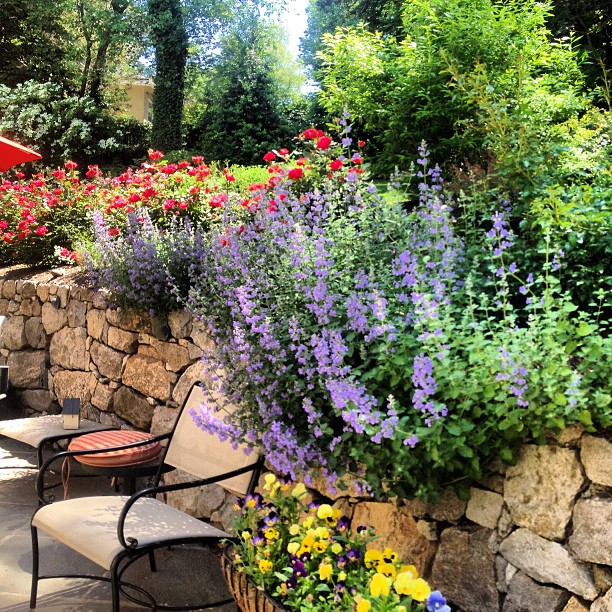Living in New Jersey means dealing with a variety of pests and diseases that can wreak havoc on your landscape. Whether you have a beautiful garden, lush lawn, or thriving trees, it’s important to be proactive in protecting your outdoor space from these threats. In this guide, we will discuss some common pests and diseases in New Jersey and provide tips on how to defend your landscape against them.
Understanding the Threats
One of the first steps in defending your landscape is to understand the threats that you are facing. In New Jersey, some of the most common pests and diseases that gardeners and homeowners encounter include:
1. Japanese Beetles: These voracious pests feed on a wide range of plants, including roses, grapes, and fruit trees. They can quickly skeletonize leaves and cause significant damage to your landscape.
2. Emerald Ash Borer: This invasive beetle attacks ash trees, eventually killing them if left untreated. Infestations have been reported in several counties in New Jersey, posing a serious threat to the state’s ash tree population.
3. Powdery Mildew: This fungal disease thrives in humid conditions and can affect a wide range of plants, including roses, cucumbers, and squash. It appears as a white powdery growth on leaves and can cause them to become distorted and discolored.
4. Deer: While not technically a pest or disease, deer can wreak havoc on your landscape by feeding on plants and trampling through gardens. In New Jersey, deer populations are high in many areas, making them a common nuisance for gardeners.
Now that we have identified some of the common threats to your landscape, let’s discuss some strategies for combatting them effectively.
Preventative Measures
Prevention is often the most effective way to protect your landscape from pests and diseases. By taking proactive measures, you can reduce the likelihood of infestations and outbreaks, saving you time and money in the long run. Here are some preventative measures to consider:
1. Choose Resistant Plants: When selecting plants for your landscape, choose varieties that are known to be resistant to common pests and diseases in New Jersey. Research different species and cultivars to find ones that are less likely to attract trouble.
2. Maintain Good Hygiene: Keeping your landscape clean and well-maintained can help prevent the spread of pests and diseases. Remove dead or diseased plant material promptly, and dispose of it properly to prevent reinfection.
3. Implement Proper Watering and Fertilization Practices: Overwatering can create conditions that are favorable for disease development, while under-fertilizing can weaken plants and make them more susceptible to pests. Follow recommended watering and fertilization schedules to keep your plants healthy and resilient.
4. Encourage Beneficial Insects: Not all insects are harmful to your landscape. Some predatory insects, such as ladybugs and lacewings, feed on pests like aphids and caterpillars. Encourage beneficial insects by planting a diverse range of flowers and providing habitats for them to thrive.
5. Install Physical Barriers: For pests like deer, physical barriers can be an effective deterrent. Install fencing or netting around your landscape to protect your plants from browsing and trampling.
When it comes to preventing pests and diseases in your landscape, being proactive is key. By taking these preventative measures, you can reduce the likelihood of infestations and outbreaks, keeping your outdoor space healthy and thriving.
Identifying and Monitoring Pests and Diseases
Despite your best efforts at prevention, pests and diseases can still find their way into your landscape. It’s important to be vigilant and monitor your plants regularly for signs of trouble. Here are some tips for identifying and monitoring pests and diseases in your landscape:
1. Know the Signs: Familiarize yourself with the common symptoms of pests and diseases in New Jersey. Look for physical damage to leaves, stems, and fruits, as well as discoloration, wilting, and abnormal growth patterns.
2. Inspect Your Plants Regularly: Take the time to inspect your plants regularly for signs of pests and diseases. Look for insects, larvae, eggs, and other indicators of trouble, and act quickly if you notice anything suspicious.
3. Use Monitoring Tools: There are a variety of tools and methods available to help you monitor pests and diseases in your landscape. Consider using sticky traps, pheromone traps, and magnifying glasses to aid in your inspections.
4. Keep Records: Keeping detailed records of pest and disease activity in your landscape can help you track trends over time. Note the types of pests you encounter, the plants they affect, and the methods you use to control them.
5. Seek Professional Help: If you are unsure about how to identify or manage a pest or disease in your landscape, don’t hesitate to seek professional help. Contact your local cooperative extension office or a certified arborist for assistance.
By staying attentive and proactive in monitoring your landscape for pests and diseases, you can catch problems early and take appropriate action to protect your plants.
Control and Management Strategies
When pests and diseases do make their way into your landscape, it’s important to have effective control and management strategies in place. There are several options available for combating these threats, ranging from cultural practices to chemical treatments. Here are some control and management strategies to consider:
1. Cultural Controls: Many pests and diseases can be managed through cultural practices, such as proper pruning, mulching, and sanitation. These practices can help reduce the likelihood of infestations and promote overall plant health.
2. Biological Controls: Biological controls involve using natural enemies of pests, such as predatory insects or beneficial microbes, to manage populations. This can be an environmentally friendly and sustainable way to combat pests and diseases in your landscape.
3. Mechanical Controls: Mechanical controls involve physically removing pests from your landscape, either by hand-picking or trapping them. This can be effective for small infestations or isolated outbreaks.
4. Chemical Controls: Chemical controls, such as insecticides and fungicides, can be effective in managing pests and diseases in your landscape. However, it’s important to use these products responsibly and according to label instructions to minimize harm to beneficial insects and the environment.
5. Integrated Pest Management (IPM): IPM is a holistic approach to pest and disease management that combines multiple control strategies to achieve long-term solutions. By incorporating prevention, monitoring, and control measures, you can effectively manage pests and diseases in your landscape while minimizing environmental impact.
When choosing control and management strategies for your landscape, consider the specific pests and diseases you are facing, as well as the potential impact on beneficial organisms and the environment. By using a combination of approaches, you can effectively combat threats to your landscape while maintaining its health and vitality.
Defending your landscape against pests and diseases in New Jersey requires knowledge, vigilance, and a proactive approach. By understanding the common threats you may encounter, implementing preventative measures, monitoring your plants regularly, and using effective control and management strategies, you can protect your outdoor space and ensure its long-term health and beauty. With diligence and care, you can create a thriving landscape that is resistant to pests and diseases, providing you with years of enjoyment and satisfaction.


Recent Comments